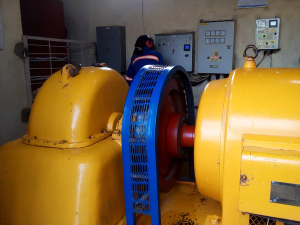 In a bid to achieve universal access to clean energy by 2030 the Government of Malawi through the Ministry of Energy is undertaking a number of interventions. One of which is the supplying of electricity in hard to reach as well as areas that are far away from the grid through mini-grids
In a bid to achieve universal access to clean energy by 2030 the Government of Malawi through the Ministry of Energy is undertaking a number of interventions. One of which is the supplying of electricity in hard to reach as well as areas that are far away from the grid through mini-grids
The Ministry supported the development of three mini-grids–Chipopoma Power Sitolo Minigrid, and Mulanje Electricity Generation Agency with funding from United Nations Developmental Programmes (UNDP) and GEF. UNDP through Increasing Access to Clean and Decentralized Energy Services (IACADES) which was Implemented from 2015 to 2019. Another UNDP funded project known as Access to Clean and Renewable Energy (ACRE) has also supported the studies of Chisi Island Zomba, Mwansambe in Ntcheu and Manolo/Malidadi Mzimba with the aim of developing mini-grids in these areas. The studies were completed however the project is supporting the construction of Chisi Island mini-grid and is currently underway with an EPC contractor on Site. The project is also supporting the upgrading of Kasangazi mini-grid.
The Ministry intends to construct three mini-grids through Malawi Rural Electrification programme (MAREP) in Gumulira in Mchinji, Usingini in Nkhatabay and Upgrading of Kasangazi mini-grid in Mzimba.
The Ministry with funding from the World Bank under Malawi Electricity Access Project (MEAP) has done feasibility studies for 10 potential mini-grids across the country. The Ministry Intends to tender the sites out to the private sector for development.
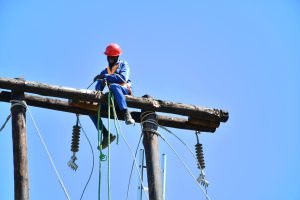 The Ministry of Energy in Malawi has been implementing various initiatives aimed at extending the national grid to rural areas to achieve universal electrification by 2030, in line with the National Energy Policy. One such initiative is the Malawi Rural Electrification Programme, which seeks to extend the grid network to rural areas.
The Ministry of Energy in Malawi has been implementing various initiatives aimed at extending the national grid to rural areas to achieve universal electrification by 2030, in line with the National Energy Policy. One such initiative is the Malawi Rural Electrification Programme, which seeks to extend the grid network to rural areas.
Provision of grid extension services have proven to improve access to electricity, which is essential for improving living standards, promoting economic growth, and reducing poverty in rural communities. Electricity has transformed rural communities by powering essential services such as healthcare facilities, schools, and water pumping systems, which has significantly improved the quality of life.
It is evident that extending the grid to rural areas helps to bridge the urban-rural divide by providing rural communities with the same opportunities and services as urban areas. This also contributes to the reduction of rural-urban migration, easing the pressure on urban infrastructure and services.
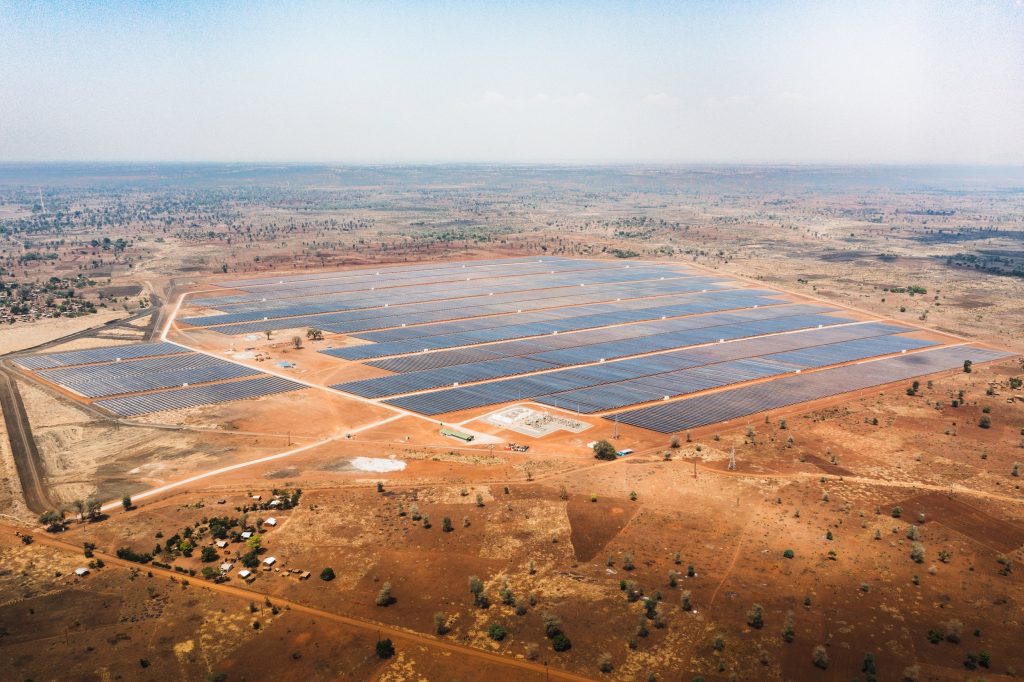
The Government has noted an increase in the use Pico Solar Products (PSPs) and an emerging potential of increasing electricity access through decentralised mini grid systems. These need to be taken into account when measuring access to electricity. In view of the fact that off-grid technologies such as Pico Solar Products (PSPs) and isolated mini-grids provide fundamental electricity services to users, the Sustainable Energy for All (SE4All) Initiative developed the Global Tracking Framework (GTF) as an improved method of defining and measuring energy access. Thus, the Energy Policy adopted Global Tracking Framework as a method for measuring electricity access.
This Off-Grid section will give an overview of various off-grid initiatives that the Ministry of Energy is implementing.
Existing mini-grids | |||||||
# | Name of mini-grid | District | Capacity | Average Monthly Generation (kWh) | Number of Households Connected to Mini-grid | Number of Commercial Entities/Productive Users Connected to Mini-grid | Number of Institutions (School, church) |
1 | MEGA | Mulanje | 220 kVA (198 kW) | 40,000.00 | 1600 | 400 | 18 |
2 | Sitolo | Mchinji | 80 kW | 7,022.50 | 665 | 3 | 5 |
3 | Mthembanji Microgrid | Dedza | 12 kW |
| 55 | 3 | 2 |
4 | Kudembwe | Dedza | 10kW |
| 55 | 3 | 2 |
5 | Nyamvuwu | Nsanje | 30 kW | 551.6 | 13 | 9 | 2 |
6 | Chimombo | Nsanje | 15 kW | 556.8 | 5 | 10 | 2 |
7 | Mwalija | Chikwawa | 15 kW | 343.3 | 5 | 1 | 2 |
8 | Oleole | Chikwawa | 25 kW | 743.1 | 16 | 8 | 1 |
9 | Mantchewe | Rumphi | 53 kW |
| 250 | 8 | 2 |
10 | Kasangazi | Mzimba |
|
| 150 |
| 1 |
11 | Chisi | Zomba | 46.2KW |
| 50 | 9 | 2 |
1. Access to Clean and Renewable Energy (ACRE) project
Access to clean and Renewable Energy is a four-year project running from January 2020 to December 2023. The project is being implemented by the Ministry of Energy with funding from UNDP. The goal of the ACRE Project is to increase access to clean, affordable, reliable, and modern energy by enhancing the sustainability, efficiency and cost effectiveness of energy technologies.
Under the project, Output one aims at expanding electricity generation capacity through scale up of clean energy minigrids targeting productive users in rural areas. Under this output, the project was supposed to develop three greenfield minigrids at Chisi Island, Mwansambe and Malidadi in Zomba, Ntcheu and Mzimba respectively. However, the project has managed to only kickstart the development of Chisi and Mwansambe sites while Malidadi has been left out for possible development in the coming UNDP energy program. At Chisi Island, construction works are at 70% completion and estimated completion date is 30th April, 2024
CHISI ISLANDSOLAR POWER PANT
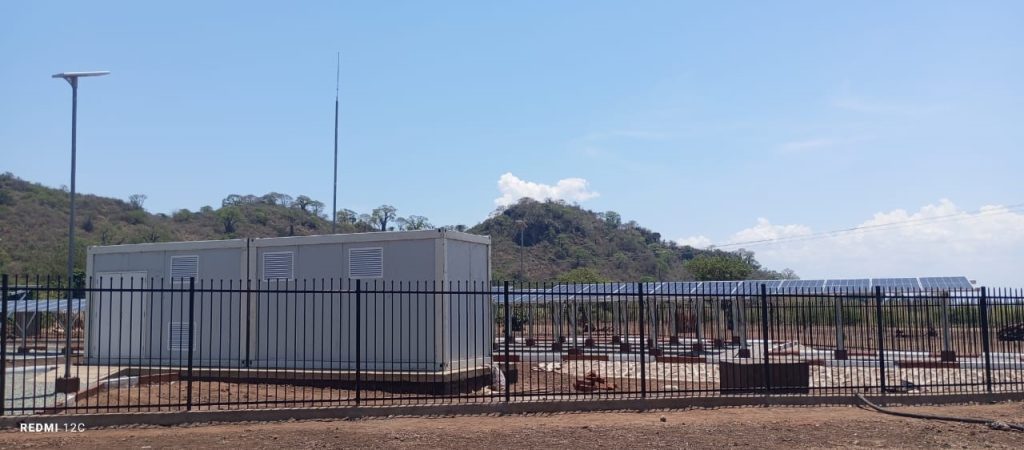
For Mwansambe minigrid, the project has commenced the recruitment of a contractor while land compensation has already been completed.
The project is also supporting two brownfield minigrids namely Kasangazi in Mzimba and Chipopoma Hydro in Rumphi. At Kasangazi, the project has finalized the construction of an electricity distribution network, an effort that will complement efforts by Press Trust and MAREP towards the construction a control room and power house respectively.
2. Malawi Electricity Access Project (MEAP)
The Ministry of Energy (MoE) with financial resources from the World Bank is implementing the Malawi Electricity Access Project (MEAP). The development objective of the MEAP is to increase access to electricity in Malawi. The mini-grid financing facility will support the development of at least 10 mini-grids prioritizing agricultural loads, schools, health facilities and enterprises in peri-urban and rural areas.
The Ministry identified the following ten (10) priority sites for private sector mini-grid
MINI-GRID SITE | DISTRICT | POWER PLANT |
| Mchinji | Solar PV |
2.Jonasi-Kaudzu | Dowa | Solar PV |
3.Macheka | Nsanje | Solar PV |
4. Ngatala | Mangochi | Solar PV |
5. Jumbi | Rumphi | Mini hydro |
6. Chinguma | Zomba | Solar PV |
7. Ngotangota | Zomba | Solar PV |
8. Masewe | Nkhotakota | Solar PV |
9. Nakaona | Dedza | Solar PV |
10.Nzoola | Dedza | Solar PV |
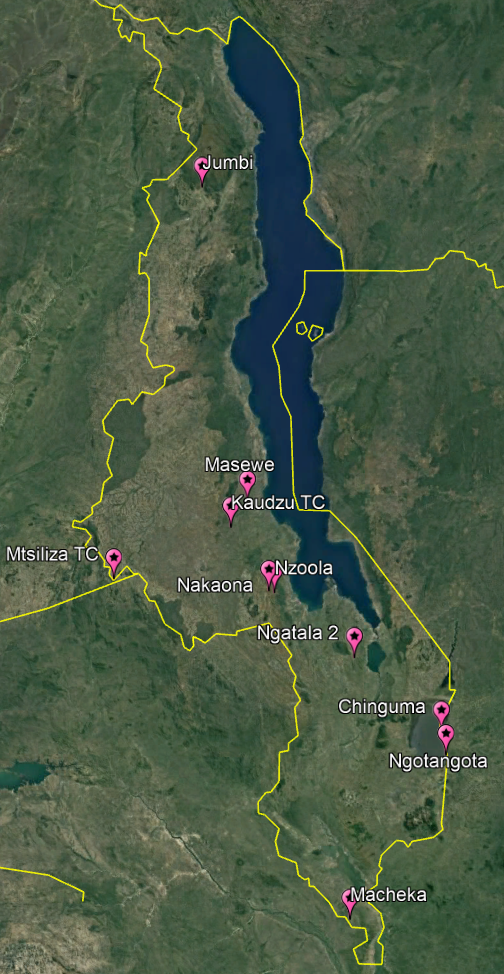
This far, feasibility studies, preliminary designs bid documents have been completed.
3. Global Energy Alliance for People and Planet (GEAPP)
The objective of the Project is to assess the technical and financial viability of hydro and hybrid solar hydro minigrids (and grid-connected grids) for provision of clean, affordable and reliable electricity to communities in Malawi. The study intends to create knowledge on the opportunity solar-hydro hybrid minigrids offer to reduce the cost of electricity.
This assessment will provide results on the feasibility of hydro and solar-hydro minigrids for electrification in Africa and Malawi in particular. GEAPP has appointed SAEMS Hydro (SAEMS) to provide the Consulting Services for this assessment Project. The map shows sites that have being assessed.
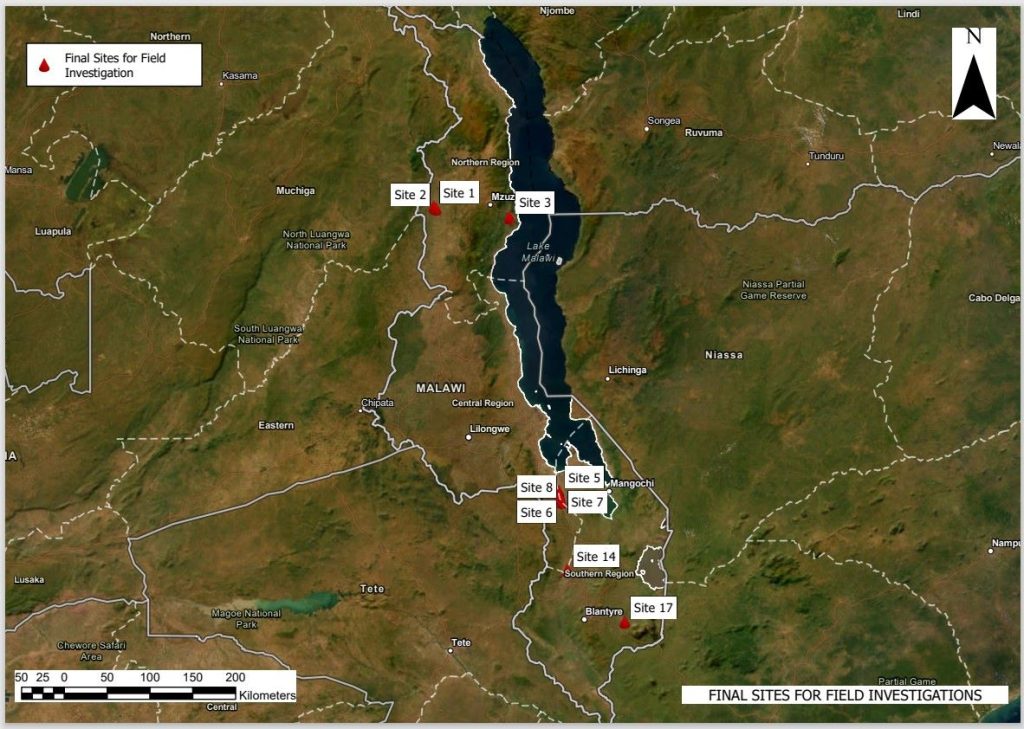
4. Malawi Rural Electrification Project (MAREP) (marep to provide)
The Rural Electrification Fund has had an impact of extending the grid to the rural areas, but with limited connections. The fund has not been utilised for off-grid electrification. The Energy Policy has encouraged implementation of MAREP using both Grid and Off-grid solutions. Currently, MAREP is developing 3 mini-grids in order to enhance rural electrification in areas far away from the grid. The Ministry will assist the following sites to have mini-grids constructed:
5. The Africa Minigrids Program (AMP)
The Ministry of Energy is implementing the AMP project with the funding from the Global Environmental Facility (GEF) through the UNDP. This is a 48-month project with a GEF grant of $396,125 and a co-financing of $2,948,270. Other responsible parties to the project include the University of Strathclyde (UoS). The project aims at supporting access to clean energy by increasing the financial viability and promoting scaled-up of commercial investment in mini-grids in Malawi. The project has three components namely policy and regulations; business model innovation with private sector engagement and digital, knowledge management and monitoring and evaluation.
This far, the Ministry has conducted a geo-mapping exercise of potential minigrid sites in Malawi. The activity will lead the creation of a Geographical Information System (GIS) based map that will visualise all energy related information for all the minigrid sites, thereby making the useful information available to potential investors. The project also entered into a memorandum of understanding (MoU) with the University of Malawi (UNIMA) for the development of an information clearing house, a website that will be a one stop centre for all minigrid related information and resources in Malawi.
For more information on Information Cleaing House , please go to Minigrids
You can access some of the information on NNFWEB
2. Transformation of Agriculture Through Building Resilience and Harnessing Green Opportunities (TARGO) PROJECT
As an extension to the Leveraging Nationally Determined Contributions (NDCs) to achieve net-zero emissions and climate-resilient development, in response to the climate emergency (JSB project), the UNDP and Japanese Government are funding the Transformation of Agriculture through building Resilience and Harnessing Green Opportunities (TARGO) project which aims to respond to the humanitarian crisis caused by the sharp rise of energy and food prices and the cost of living due to the war between Russia and Ukraine through the enhancement of access to clean energy and the capability to improve agricultural productivity.
The project will address food insecurity in Malawi in the short term and contribute to Malawi achieving its NDC goals and targets. In addition, the project will install solar home systems (SHSs) in Nkhotakota and Zomba districts. Installing the solar home PV systems is expected to help the country meet its mitigation targets by reducing greenhouse gas emissions from use of kerosene and wood for lighting. Currently, SHSs are being procured for distribution to targeted beneficiaries in the aforementioned districts and the systems are expected in the country by mid-April, 2024. The Ministry of Energy is managing the energy component of the TARGO project in liaison with Environmental Affairs Department (EAD).
Below is a table with a summary of Solar Home Systems distributed under the JSB Project.
District | Number of Systems Distributed |
Kasungu | 298 |
Ntchisi | 300 |
Nkhotakota | 323 |
Dowa | 380 |
Machinga | 313 |
Zomba | 327 |
Under the TARGO project, we are targeting 8 Trading Centres in Zomba for flood lighting and 250 SHSs in Nkhotakota and Zomba.
3. MALAWI RURAL ELECTRIFICATION PROGRAMME (MAREP)
As a way of spurring connections in rural households, government devised electricity connection schemes for low-income households. One of the schemes is the Ndawala Initiative under which selected beneficiaries have their houses wired on a soft loan under a subsidized cost payable without interest.
Under MAREP Phase 9, the Ndawala Initiative will also target 2,000 ultra-poor households and provide them with solar home systems for free. Targeted beneficiaries are ultra-poor female headed, child headed, orphans and other vulnerable households.
The Ministry undertook an assignment to update the Rural Electrification Master plan. During the exercise, potential Minigrid sites were identified and mapped. Below is a summary.
POTENTIAL MINIGRID SITES SUMMARY | |
District | # of Sites |
North | 21 |
Chitipa | 2 |
Mzimba | 12 |
Nkhatabay | 7 |
Central | 27 |
Dedza | 7 |
Dowa | 2 |
Kasungu | 2 |
Salima | 1 |
Ntcheu | 2 |
Lilongwe | 8 |
Nchinji | 5 |
Southern | 14 |
Machinga | 3 |
Mangochi | 5 |
Nsanje | 6 |
TOTAL NUMBER OF POTENTIAL SITES | 62 |
For a detailed list click here (an excel list be loaded in the downloads section)
